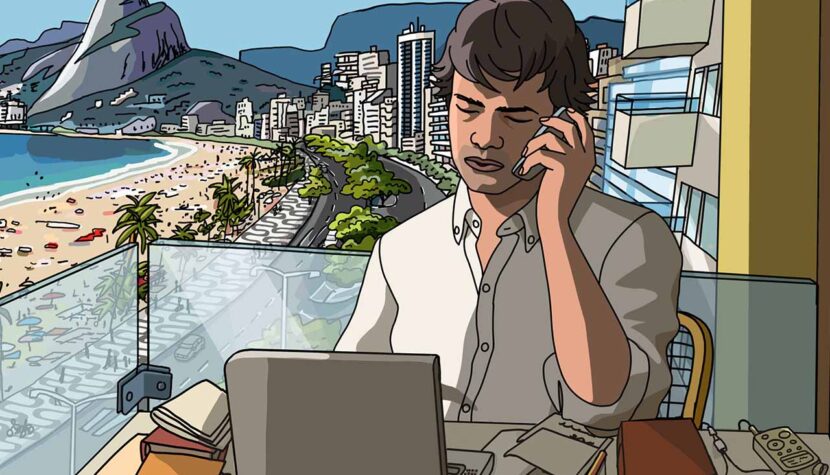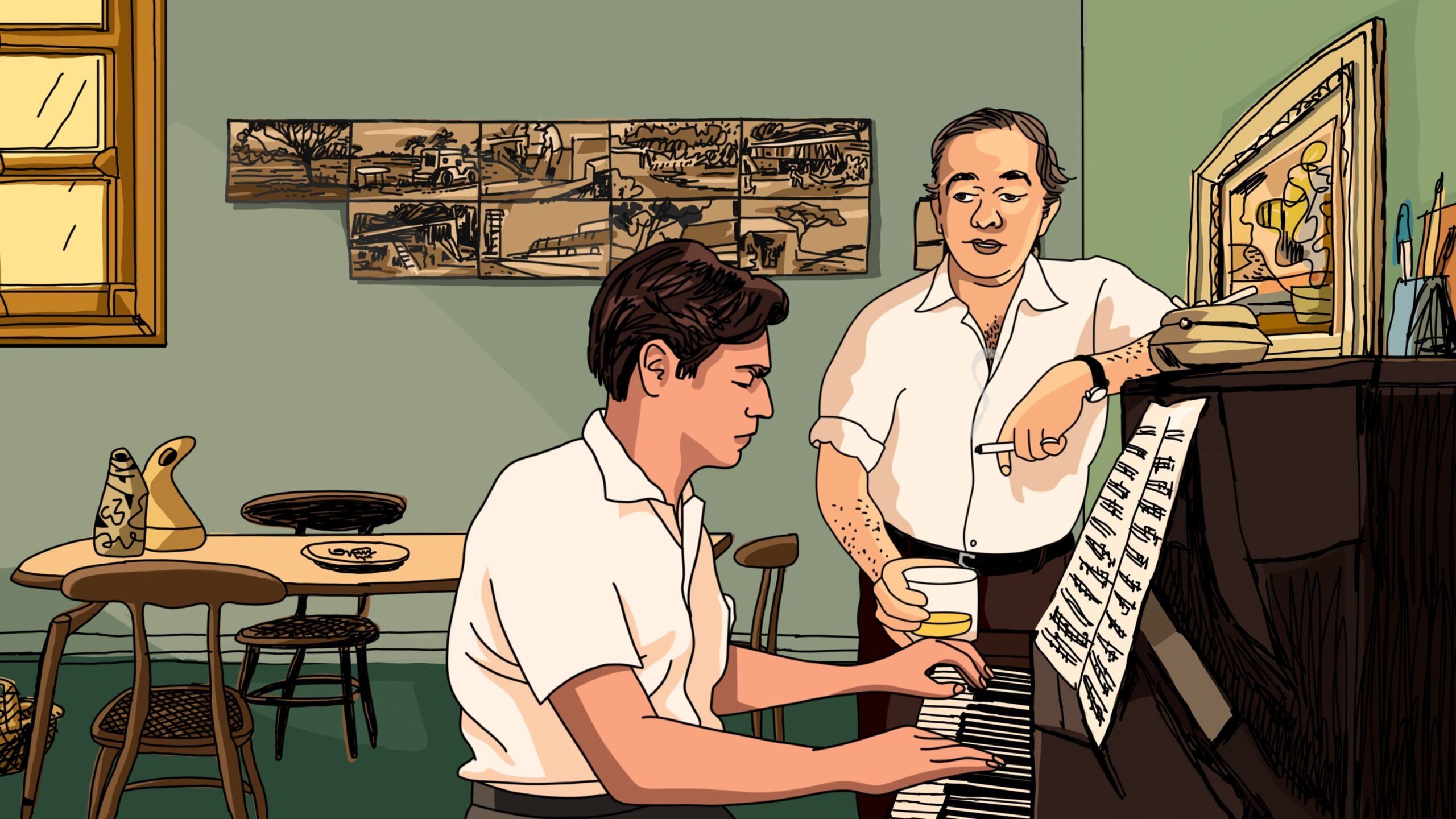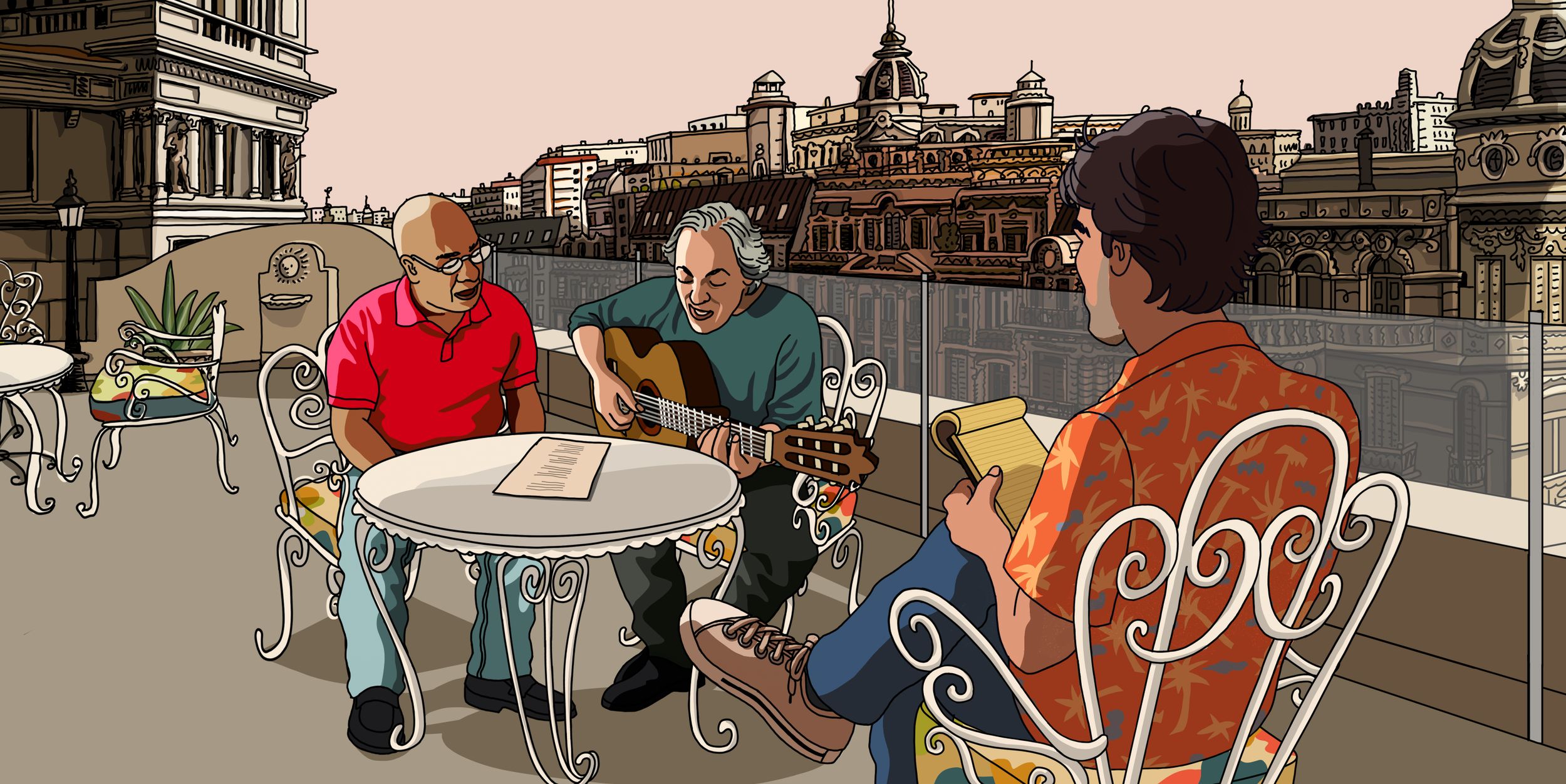THEY SHOT THE PIANO PLAYER. Jeff Goldblum on the trail of a murder

Fernando Trueba, one of the directors of the film They Shot the Piano Player, first encountered the name Francisco Tenório Júnior over 20 years ago while browsing records in a music store. It took only a few minutes of listening for him to appreciate the Brazilian pianist’s artistry. The first thing he did after returning home was to search for the musician’s name online. To his astonishment, the director discovered that Tenório – a man of immense talent and well-versed in the artistic community – had not produced anything for many years. For one very simple reason: in 1976, the Brazilian disappeared. Literally. He left his hotel in Buenos Aires in the middle of the night and was never heard from again.
Trueba shares his perspective in They Shot the Piano Player through the main character – a certain Jeff Harris. Jeff is a journalist for the iconic New Yorker and a music lover, a great fan of jazz. He travels to Brazil to write a report on the bossa nova movement – a musical style that enjoyed enormous popularity in the 1960s, combining American jazz and Brazilian samba influences. Once there, the protagonist conducts interviews with various artists and local journalists. He inquires about the old days with considerable knowledge of the subject, though somewhat mechanically, without much enthusiasm. By a strange coincidence, Tenório Júnior’s name comes up in almost every conversation. A name the American had previously encountered only once – on the back cover of a vinyl record in a local shop. Like a good journalist, Harris starts digging. Soon, Tenório’s story becomes his personal obsession – so much so that the subject of his book changes. Its sole focus becomes the relatively unknown Brazilian pianist.

Trueba and his co-director Javier Mariscal skillfully employ the narrative formula of Citizen Kane – since Tenório disappeared and is most likely deceased, we learn about him indirectly through the stories of Harris’s interviewees. The picture that emerges from these stories is not entirely consistent. Some see him as a good father and exemplary husband. Others shyly mention an affair he had shortly before his disappearance. His children barely remember him. His wife is reluctant to talk about him – only agreeing to a short conversation after some time, but without recording, on her own terms. The narrative formula proposed by Welles, and later used by Dorota Kobiela and Hugh Welchman (Loving Vincent), once again serves to prove that there is no single truth about a person. As postmodernists posited: there are as many truths as there are people who have something to say. Each person sheds light on the character from a slightly different angle, constantly broadening our perspective and leading to a cognitive impasse. Everyone agrees on only one thing: that Tenório was an intelligent man and a wonderful pianist. And his disappearance left a huge gap in the history of Brazilian music.
They Shot the Piano Player is interesting for at least one more reason. While the character of Jeff Harris is fictional (brilliantly dubbed by Jeff Goldblum, a great jazz fan and occasional pianist), most of the protagonist’s interviewees are real, and their statements were recorded in a manner typical of documentary filmmaking, with the director-journalist behind the camera. This makes They Shot the Piano Player a kind of animated documentary. A creation that only seems paradoxical, and is not new at all. Ari Folman experimented with a similar blend several years ago in the memorable Waltz with Bashir. Even earlier, Swedish documentarians David Aronowitsch and Hanna Heilborn used this formula, overlaying animated visuals on interviews with war refugees in Scandinavia (Jonas Poher Rasmussen, the author of the acclaimed Flee, recently followed in Aronowitsch and Heilborn’s footsteps). The unlimited creative possibilities of animation allow for the visual representation of stories that would otherwise remain verbalized. On the other hand, they allow for hiding what the characters are ashamed of or cannot show, for instance, for their safety. Trueba and Mariscal’s film does not expand the animated documentary formula in any way. However, it uses it intelligently, interweaving conversations and accompanying retrospectives with purely educational inserts that build the story with essential historical and cultural contexts.

The title of Trueba and Mariscal’s animation is not accidental – it refers to François Truffaut’s second directorial film. In Shoot the Piano Player, the Frenchman told the story of a shy bar musician who gets entangled in a plot bigger than him and gradually loses his footing. It was similar with Tenório. It turns out that he fell victim to Operation Condor – a secret collaboration between the intelligence and special services of South American countries. In other words, he was in the wrong place at the wrong time. He also looked wrong: long hair, a beard, glasses. That was enough for him to be labeled a communist in the 1970s and subsequently eliminated – as a potentially subversive and socially undesirable element. In the finale of They Shot the Piano Player, Harris restores Tenório’s memory through his book – Trueba and Mariscal do the same with their film. In a visually, narratively, and musically attractive way.

